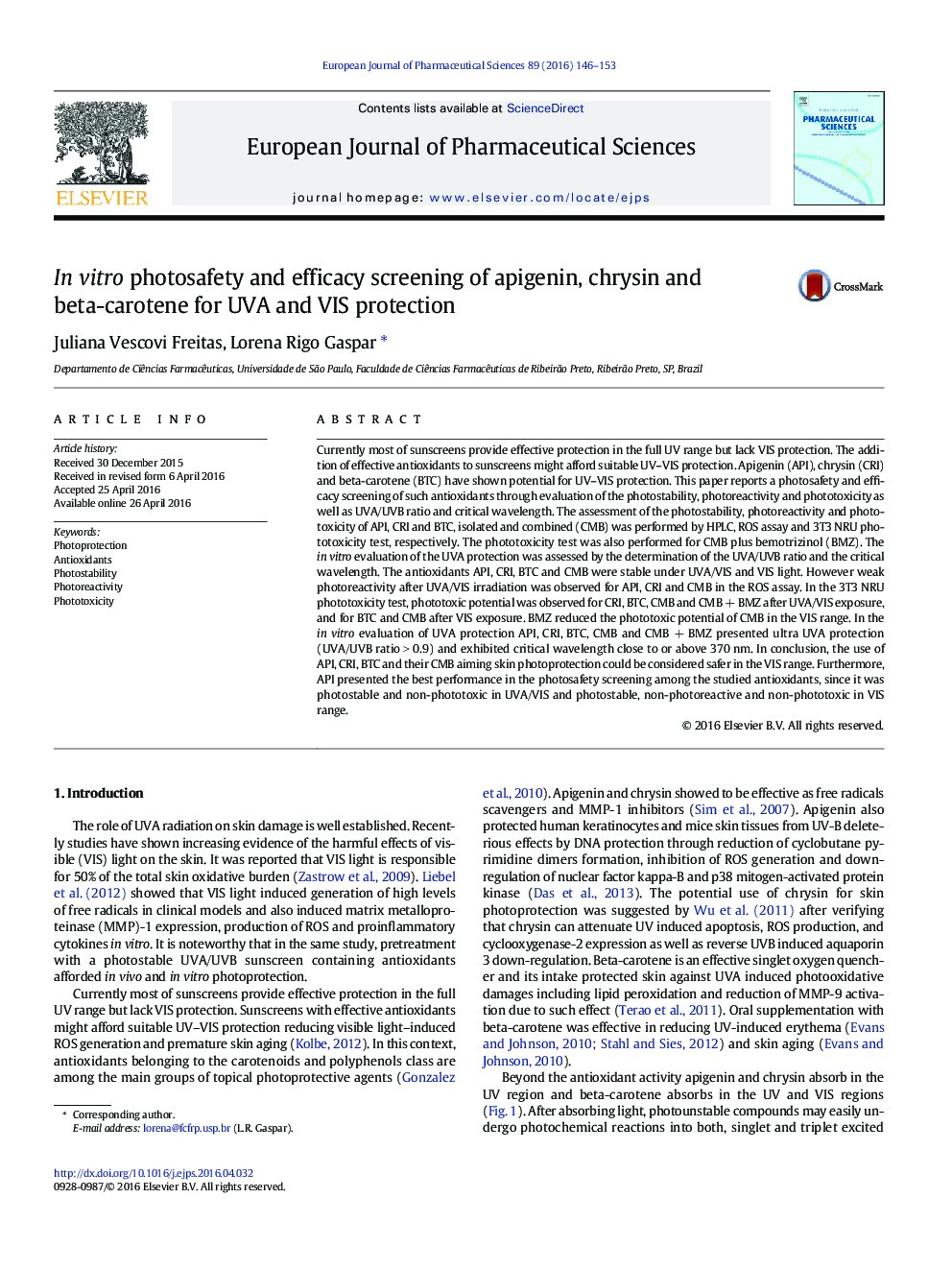| کد مقاله | کد نشریه | سال انتشار | مقاله انگلیسی | نسخه تمام متن |
|---|---|---|---|---|
| 2480052 | 1556161 | 2016 | 8 صفحه PDF | دانلود رایگان |

Currently most of sunscreens provide effective protection in the full UV range but lack VIS protection. The addition of effective antioxidants to sunscreens might afford suitable UV–VIS protection. Apigenin (API), chrysin (CRI) and beta-carotene (BTC) have shown potential for UV–VIS protection. This paper reports a photosafety and efficacy screening of such antioxidants through evaluation of the photostability, photoreactivity and phototoxicity as well as UVA/UVB ratio and critical wavelength. The assessment of the photostability, photoreactivity and phototoxicity of API, CRI and BTC, isolated and combined (CMB) was performed by HPLC, ROS assay and 3T3 NRU phototoxicity test, respectively. The phototoxicity test was also performed for CMB plus bemotrizinol (BMZ). The in vitro evaluation of the UVA protection was assessed by the determination of the UVA/UVB ratio and the critical wavelength. The antioxidants API, CRI, BTC and CMB were stable under UVA/VIS and VIS light. However weak photoreactivity after UVA/VIS irradiation was observed for API, CRI and CMB in the ROS assay. In the 3T3 NRU phototoxicity test, phototoxic potential was observed for CRI, BTC, CMB and CMB + BMZ after UVA/VIS exposure, and for BTC and CMB after VIS exposure. BMZ reduced the phototoxic potential of CMB in the VIS range. In the in vitro evaluation of UVA protection API, CRI, BTC, CMB and CMB + BMZ presented ultra UVA protection (UVA/UVB ratio > 0.9) and exhibited critical wavelength close to or above 370 nm. In conclusion, the use of API, CRI, BTC and their CMB aiming skin photoprotection could be considered safer in the VIS range. Furthermore, API presented the best performance in the photosafety screening among the studied antioxidants, since it was photostable and non-phototoxic in UVA/VIS and photostable, non-photoreactive and non-phototoxic in VIS range.
Figure optionsDownload high-quality image (253 K)Download as PowerPoint slide
Journal: European Journal of Pharmaceutical Sciences - Volume 89, 30 June 2016, Pages 146–153